Introduction to Sedum: The Garden’s Tough Treasure
Welcome to the rugged world of sedum, the plant kingdom’s equivalent to a Swiss Army knife. Tough as nails, yet as elegant as a piece of living art, sedum plants (or stonecrops, if you fancy) are the unsung heroes of gardens and rooftops across the globe. Ever versatile, these succulent sensations slap a green thumb on anyone willing to listen to their tales of resilience and beauty.
Imagine a plant that shrugs off drought, laughs in the face of frost, and brightens up the most forsaken of spots with a joyous burst of life. That’s sedum for you! These hardy troopers evolve in the harshest of habitats and yet somehow manage to look fresh off the garden magazine cover—all without the prima donna demands. Sedum’s easy-care nature makes it a top pick for both the novice balcony gardener and the seasoned landscape artist.
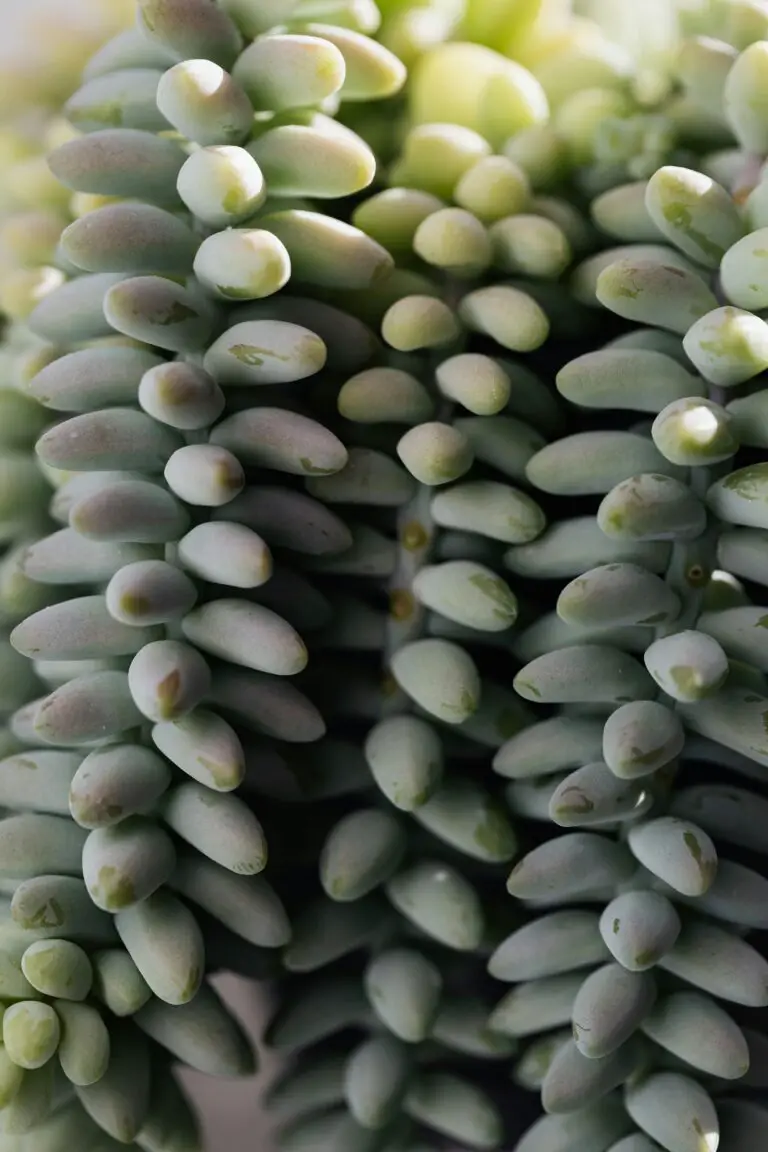
Whether you’re transforming a rocky terrain into a delightful xeriscape or jazzing up your office desk with a miniature garden, sedum brings texture, color, and a certain je ne sais quoi. Gardeners everywhere cherish the joy of watching these succulents transition from tiny, stubby shoots into voluptuous mounds of lush foliage. Plus, let’s not forget their star-studded performance in autumn, when sedum flowers paint the town in shades of pink, red, and yellow.
Need tips on nurturing these versatile beauties? Look no further! However, if you’re hankering for more broad-ranging succulent gardening tips, we’ve also got your spade covered. Dive into the world of sedum, where green dreams flourish with a touch of grit and a sprinkle of charm. Let your garden be the canvas, and sedum—the hardy splash of green that ties it all together.
Decoding Sedum: Etymology and Symbolism
What’s in a name? Quite a bit, it turns out, especially when it comes to the succulent sensation known as sedum. These plump, water-storing plants go by many names, but “sedum” has stuck around through the ages. But where does this name come from, and what secrets does it hold within its linguistic roots?
The term ‘sedum’ arises from the ancient Latin ‘sedeo,’ which means to sit. It’s no coincidence that these plants are often found sitting atop rocks and ledges with their roots anchored in the scantiest of soils. Their ability to thrive in challenging conditions has even led some to speculate that the name reflects their ‘sitting pretty’—defying the odds with a sort of botanical chutzpah.
Around the globe, sedum carries various connotations and serves as a symbol in gardens both large and small. In Asia, for example, sedum is often associated with serenity and tranquility, embodying the principles of harmony within a landscape. The plant’s hardiness and longevity have also prompted many to view it as a symbol of endurance and resilience—a living metaphor for those who weather life’s storms with grace and strength.
If you’re looking to be inspired by sedum’s tenacity, why not delve deeper into their world, discovering how their seductive charms extend far beyond mere aesthetics? Whether it’s their drought tolerance or their penchant for attracting pollinators, sedums have a story to tell.
While their names and symbols may vary, the love for these ‘stonecrop’ beauties is universal. From the rooftop gardens of Brooklyn to the quaint English cottages, sedum showcases its ability to connect people with nature’s resilience. It’s a reminder that, sometimes, the true beauty lies in persistence and adaptability.
For those eager to ensure their sedums are sitting as pretty as possible, taking a look at some essential care tips can make all the difference. After all, every plant has its needs, and understanding them is key to unlocking their full potential. Sedum may symbolize simplicity, but their care can bridge the gap between novice green thumbs and seasoned gardeners alike.
Sedum Varieties: Exploring the Extensive Family
Think you know Sedum? Well, buckle up, plant enthusiast, because there’s a whole world of these succulent sensations just waiting to be explored. Let me take you on a whirlwind tour through the diverse and vibrant Sedum family. Imagine a botanical tapestry woven with textures and hues as varied as the places they hail from. Yes, we’re talking rock gardens, living roofs, and even your chic, sunlit windowsills!
Take ‘Autumn Joy,’ for instance – it’s not just a sedum. It’s a statement piece that ushers in the fall with its stunning rosy blossoms. Picture these beauties among a sea of fiery fall foliage, and you’ve got a real-life painting right in your backyard. Autumn Joy is not just a joy by name but a powerhouse of resilience that heralds the change of seasons with grace. But wait, there’s more!
A Biodiverse Bunch: From Acre to Ewersii
The Sedum family showcases a masterclass in biodiversity. You’ve got ground huggers like Sedum acre, an evergreen carpet that comes alive with starry yellow flowers. Then there’s Sedum ewersii, with its dreamy pink blooms that seem plucked from a fairy tale. These varieties hold within their delicate forms a secret language of survival, thriving in areas where most would admit defeat. They’re the plucky underdogs of the plant world!
And let’s not forget the video we have included here, which will give you a glimpse into the life of these amazing plants.
Exploring this family further, we meet varieties that blend quietly into the background, only to surprise you with a riot of color when you least expect it. Yes, Sedum sure knows how to throw a garden party! Each species, with its unique features, tells a captivating story of adaptation and beauty. They’re like the hardy adventurers of the plant kingdom, facing off against drought, poor soil, and scorching sun without missing a beat.
If you’re itching to dig deeper into the cultivation and care of these versatile plants, check out our comprehensive guide on growing and caring for sedum plants. Here you’ll unearth a treasure trove of tips and wisdom to help your own collection of sedums flourish.
Sedums are truly a low-maintenance dream. They ask for so little – just a sunny spot and a bit of neglect – yet give so much in return. They’re the reliable friends in the plant world, sticking with you through the garden’s highs and lows, and they embody a multitude of meanings across their extensive family. Some symbolize tranquility, others endurance, and many reflect an unassuming charm that can brighten any corner of your garden or home.
The sedum story is one of variety, resilience, and undeniable charm. It’s a tale entwined with the very essence of what it means to thrive against the odds. These succulents are not just about survival; they’re about making a dramatic statement in the most understated way. So next time you encounter a sedum, take a moment to appreciate the depth and diversity of this wondrous family.
Caring for Sedum: Tips for Vibrant Growth
Prepare to delve into the wonderful world of sedum, the plant embodies resilience and beauty with its thick, fleshy leaves and vibrant blossoms. In this ode to the ever-popular succulent, we’ll reveal how you can encourage your sedum to thrive with a little know-how and tender loving care. Let’s get growing!
Discover the Delights of Low Maintenance
Breathe a sigh of relief, green thumbs and novices alike, for sedum is a champion of the ‘less is more’ approach. Perfect for those who adore the natural world but are strapped for time, these plants won’t need you to hover with a watering can or fuss with finicky fertilizers. Imagine stepping into your garden to find your sedums content in their sunny abode, vibrant and lush with minimal intervention.
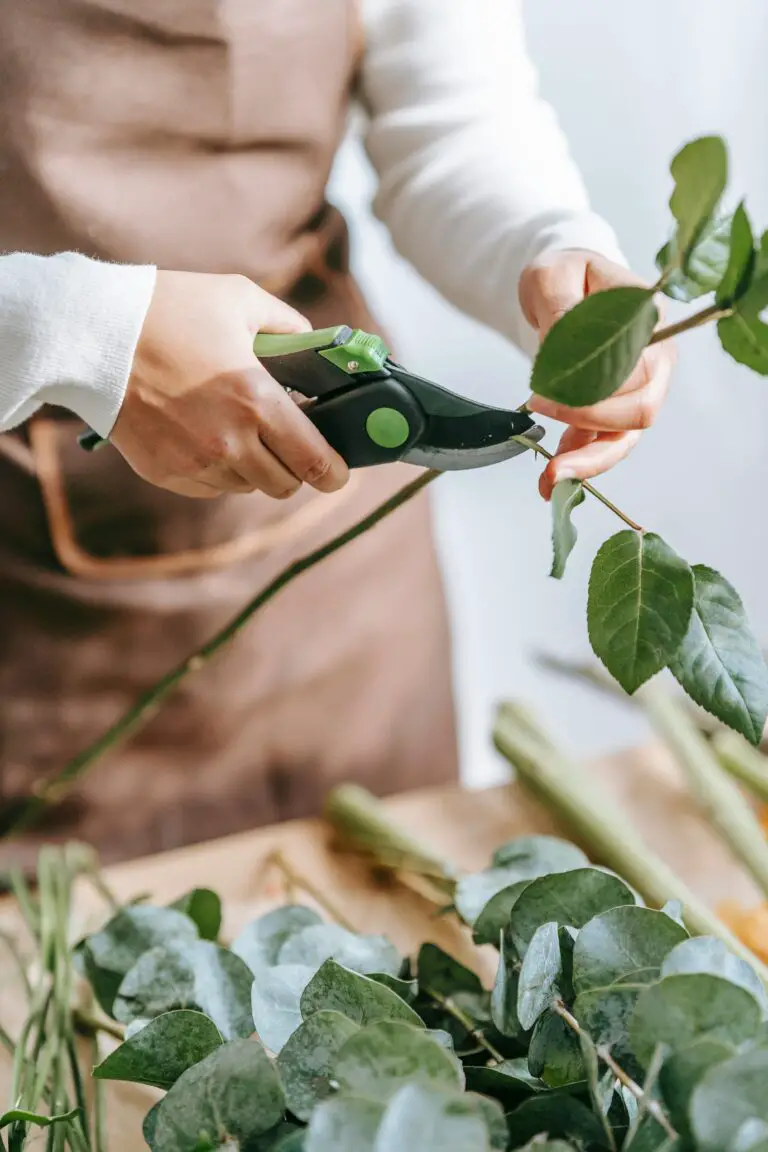
Best Practices for Bountiful Blossoms
To see your sedum flourish, remember this simple mantra: ‘Sunshine, drainage, and a touch of love.’ These succulents relish the warm embrace of the sun, so ensure they bask in its glory for the better part of the day. A well-draining home is crucial too; think sandy soil that clings not with excess moisture but offers a cozy, yet breathable retreat for their roots.
And as for love? Well, that comes in the form of your watchful eye and a gentle hand at pruning. Clip away spent blooms to beckon forth fresh waves of color and, every spring, trim back any overeager foliage aspiring to overtake the garden. Sidebar: If you’re yearning to expand your sedum collection, snipping stems for propagation is as rewarding as it is simple.
Enrich and Enjoy
Your sedum won’t pine for constant feeding, but an occasional treat can spur them to show off even more. Once a year as spring unfurls, bestow upon them a smattering of organic compost. If sedum could smile, they would at this gesture. And while they’re drought-tolerant by nature, during those particularly parching spells of summer, offer a drink to quench their thirst. Just a sip, mind you, for overwatering is the sly adversary of these stalwart plants.
With these straightforward tips—the sunshine, the superb drainage, the judicious pruning, and the sparse yet strategic feeding—your sedum is set to soar. For a more comprehensive dive into the world of sedum care, I recommend exploring this articulate care guide which can serve as a perfect companion on your succulent journey. Fret not; these tips are as perennial as the plants themselves, ensuring year after year of vibrant growth and breath-taking blooms!
Sedum in Landscaping: Aesthetics and Functionality
Imagine stepping into a garden where the intricate tapestry of foliage sets a tranquil scene, punctuated by the hardy yet graceful forms of sedum. These succulents, known for their plump leaves and starry flowers, have become a staple in modern landscaping—and for good reason. Bringing together beauty and practicality, they are the unsung heroes of water-wise gardens and captivating outdoor spaces.
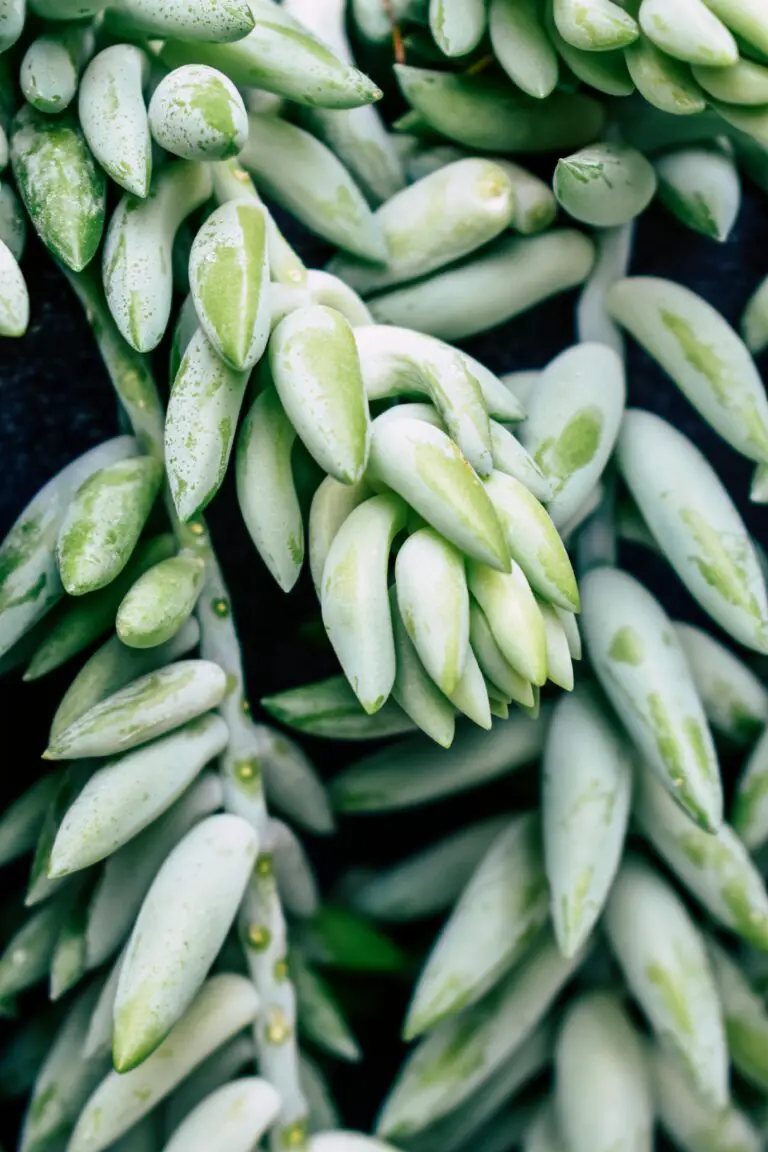
For those seeking an aesthetic oasis in their own backyard, sedum offers a palette of colors and textures not easily rivaled. From the frosty blues of ‘Blue Spruce’ to the fiery reds of ‘Dragon’s Blood’, these succulents paint with a broad brush. Imagine the russet tones of ‘Autumn Joy’ sedum blending seamlessly with the golden hues of ornamental grasses in fall—a picture-perfect postcard moment that nature enthusiasts yearn for.
But their allure is more than skin deep. As ground cover, sedums work tirelessly to stabilize soil and suppress weed growth, creating a pristine green carpet with minimal labor. For areas facing restrictions on water use, they emerge as the ultimate survivors. Their drought-tolerant nature allows gardeners to cultivate lush landscapes without the guilt of excessive water consumption—a godsend in arid climates or during sizzling summers.
Aside from their drought resilience, sedums are also famed for their ability to attract beneficial pollinators. Gardens teeming with these succulents are a common sight, as butterflies and bees flit from flower to flower in a delightful ballet of nature. This ecological boon, combined with the low maintenance required by these hardy perennials, exemplifies a win-win for both homeowner and habitat.
Integrating Sedum into Modern Design
Forward-thinking architects and landscapers are now using sedum beyond the traditional flowerbed. Green roofs dotted with sedum species are cropping up in urban settings, turning barren rooftops into thriving ecosystems that cool buildings and reduce runoff. By showcasing sedum in these innovative frameworks, they blend form and function in a way that encapsulates the very essence of sustainable design.
In residential landscaping too, sedums are taking center stage. Rock gardens interspersed with these rugged beauties are appealing not only for their visual interest but also for their ecological footprint. By replacing swaths of thirsty lawn with sedum varieties, homeowners are embracing a new paradigm of garden aesthetics—one that celebrates resiliency and sustainability alongside splendor.
Sedum and Sustainability: Eco-Friendly Gardening Choices
The succulent known as sedum is not just another pretty face in the world of drought-resistant plants; it’s a heavyweight champion in the eco-friendly gardening arena. When we talk about sustainable gardening, sedum stands out for its incredible ability to thrive with minimal water, reducing our reliance on this precious resource. But that’s just the beginning of this green warrior’s environmental credentials.
Let’s dive into what makes sedum such an asset for water conservation. Known for its resilience in arid conditions, this succulent requires significantly less hydration compared to thirstier greenery. This means that by incorporating sedum into your garden, you can cut down on your water bill and contribute to the conservation efforts that are crucial in areas prone to drought.
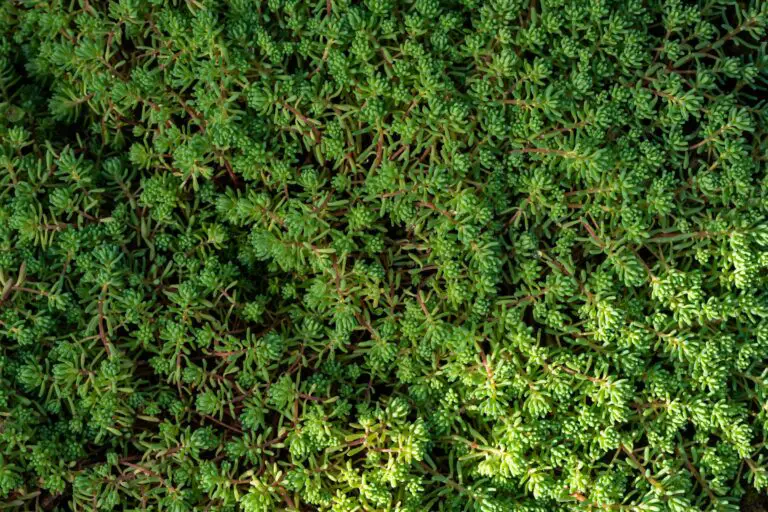
But sedum’s benefits extend beyond water savings. Erosion is a silent threat that can strip away fertile topsoil, but thankfully, sedum acts like an anchor, holding the soil in place with its extensive root system. This not only prevents valuable soil from being washed away during heavy rains but also maintains the integrity of your garden’s infrastructure.
And who doesn’t want to see more butterflies and bees buzzing around their blooms? Sedum is a magnet for pollinators, those tireless workers who play a crucial role in the reproduction of many plants and crops. By choosing to plant sedum, you’re essentially rolling out the welcome mat for these essential creatures, promoting biodiversity, and ensuring the continuation of plant species.
Imagine your garden as a tapestry of sustainability, with sedum as one of the threads weaving through it. Real-life examples abound of gardeners and landscapers who have transformed barren rooftops into lush, green oases with sedum varieties. This isn’t just an aesthetic improvement; it’s a functional, living ecosystem that cools buildings, provides habitats, and creates green spaces in urban environments where concrete often reigns supreme.
Redefining the Green Space with Sedum
In conclusion, sedum isn’t merely a groundcover; it’s a groundbreaker in the realm of sustainable gardening. Whether it’s a home garden in need of some drought-resistant flair or a community initiative looking to green up public spaces innovatively, sedum is the go-to choice for those thinking ahead. As the world becomes increasingly aware of the need for sustainable practices, sedum represents a shining example of how we can adapt and thrive in harmony with nature, making every choice count for the betterment of our planet.
Frequently Asked Questions
Whether you’re a green-thumbed guru or a budding botanist, everyone has questions when it comes to the sedum, the succulent sensation that’s been sprouting up in conversations. We’ve rooted out the most common inquiries and planted some answers that will help you cultivate your knowledge on these resilient beauties.
What Exactly Does ‘Sedum’ Mean?
Let’s dig into the dirt of semantics: ‘Sedum’ is not just a catchy name; it’s a term that hails from Latin, sēdēre, meaning “to sit.” This appellation is a nod to the way these plants often nestle into rocky nooks and crevices, sitting pretty and comfortable in seemingly inhospitable spots. Imagine these succulents lounging in the nooks of a craggy cliff, nonchalantly soaking in the sun – that’s the sedum spirit!
How Do Sedum Plants Adapt to Their Environment?
The sedum’s not just about good looks – these plants are survivalists! Their fleshy leaves store water, allowing them to tolerate drought like a cactus struts its stuff in the desert. Their robust roots hold on to soil like a koala clings to a eucalyptus tree. It’s these adaptations that let sedum shine in environments where others might wither away.
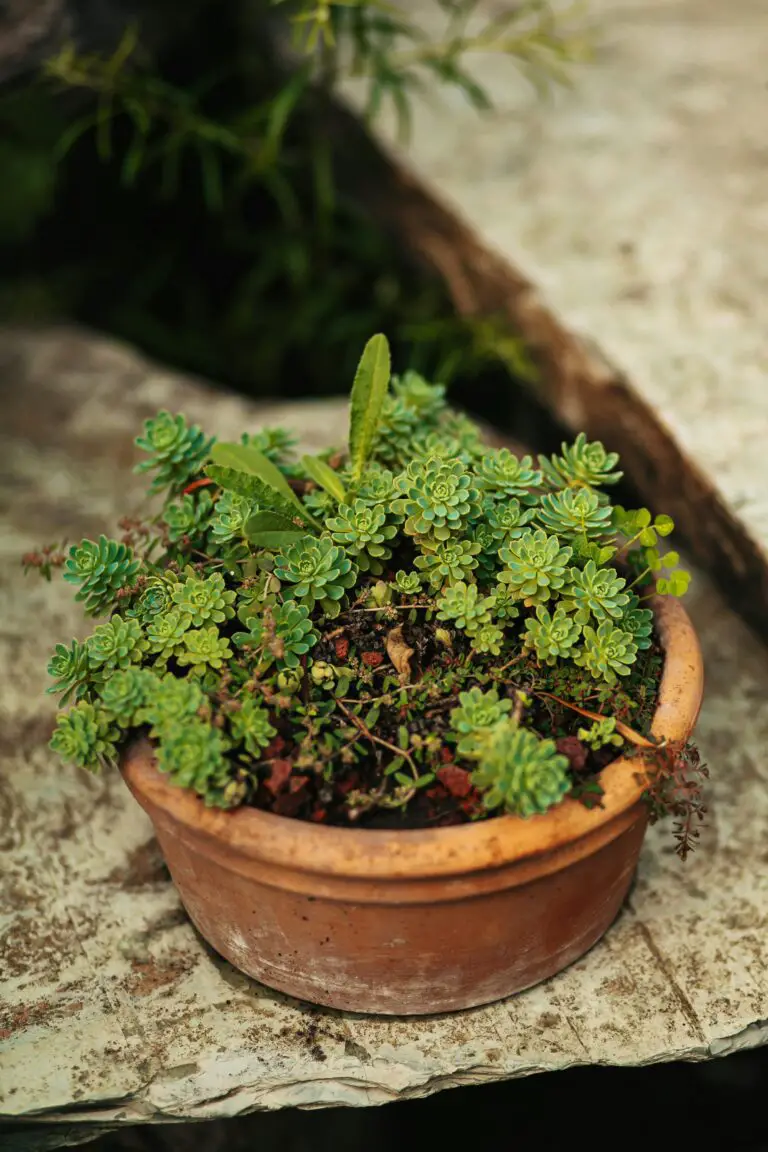
Can Sedum Survive Harsh Winters?
Just like your favorite woolly sweater braves the winter chill, sedum plants have their own cozy armor. Many sedum species die back to the ground in autumn, only to triumphantly return in the spring. Others, like Sedum spectabile, proudly display their frost-kissed crowns throughout the cold months, proving their mettle against Old Man Winter.
Are Sedum Plants Easy to Care For?
Looking for a plant companion that doesn’t demand the high maintenance of a Parisian poodle? Sedum to the rescue! These are the friends you need in your life:
easygoing, low-maintenance, and always up for a bit of fun in the sun. Just plunk them in a well-draining pot with some gritty soil, and they’re good to go – no coddling required.
What’s the Best Way to Propagate Sedum?
If sharing is caring, then sedum is the most generous of all. Propagation is as simple as taking a leaf or stem cutting, letting it callous over for a day or two, and then popping it into some moist soil. Soon enough, you’ll have little sedum sprouts popping up, ready to join the succulent brigade.
Where Do Sedums Fit Best in Landscaping?
Think of sedums as the versatile fashionistas of the plant world. They seamlessly slip into rock gardens, green roofs, and as ground covers in drought-prone areas. With a sedum in your garden arsenal, you’ll have a living tapestry of color, texture, and year-round interest. They’re like the perfect pair of jeans – they look good no matter where they go!



